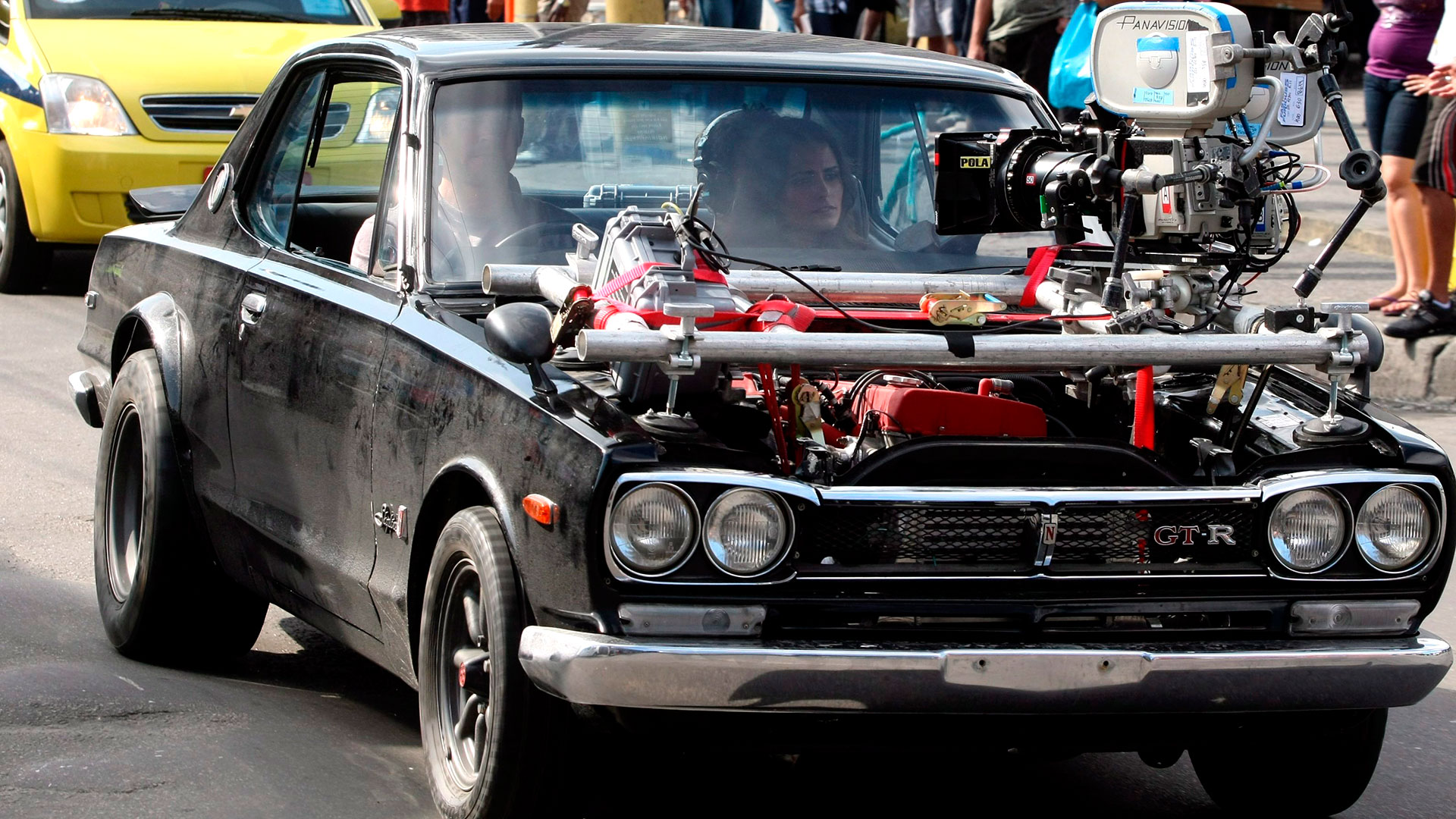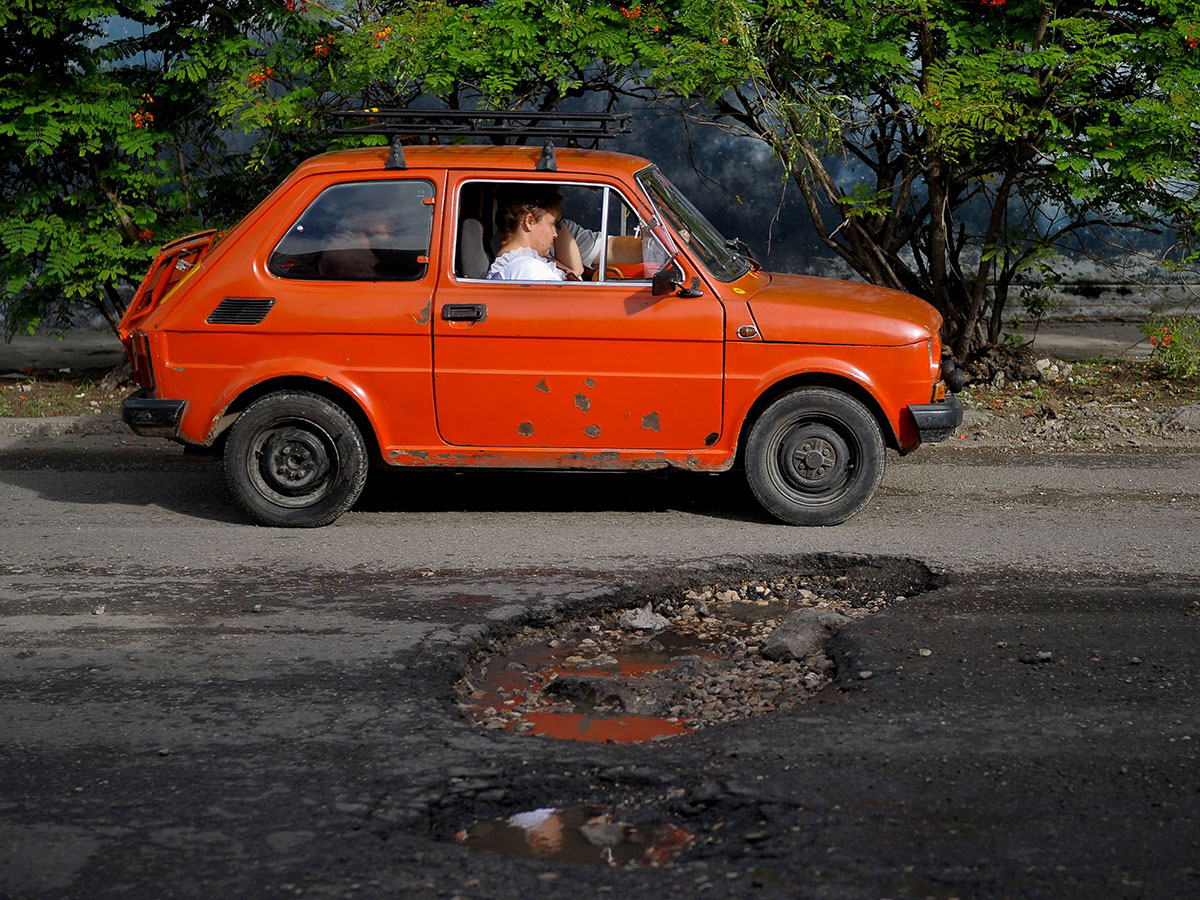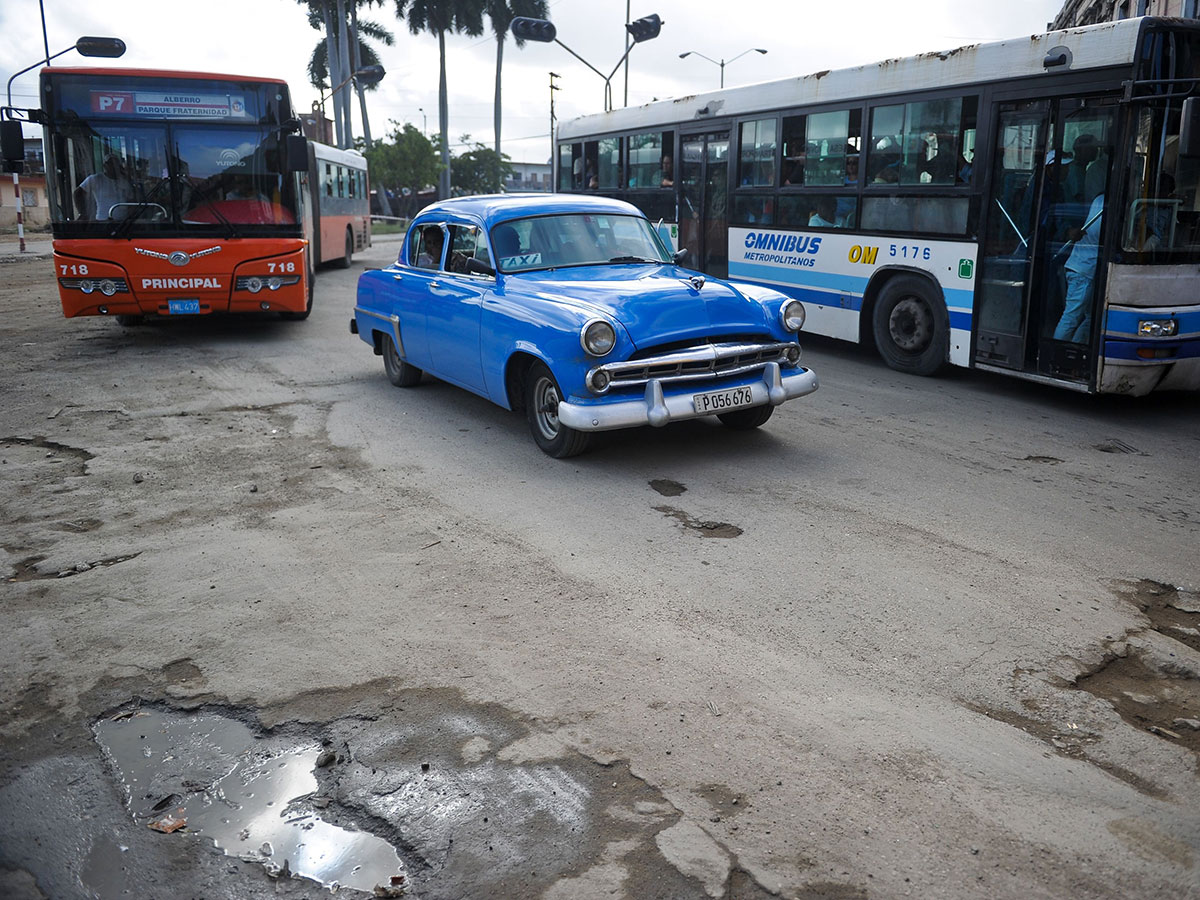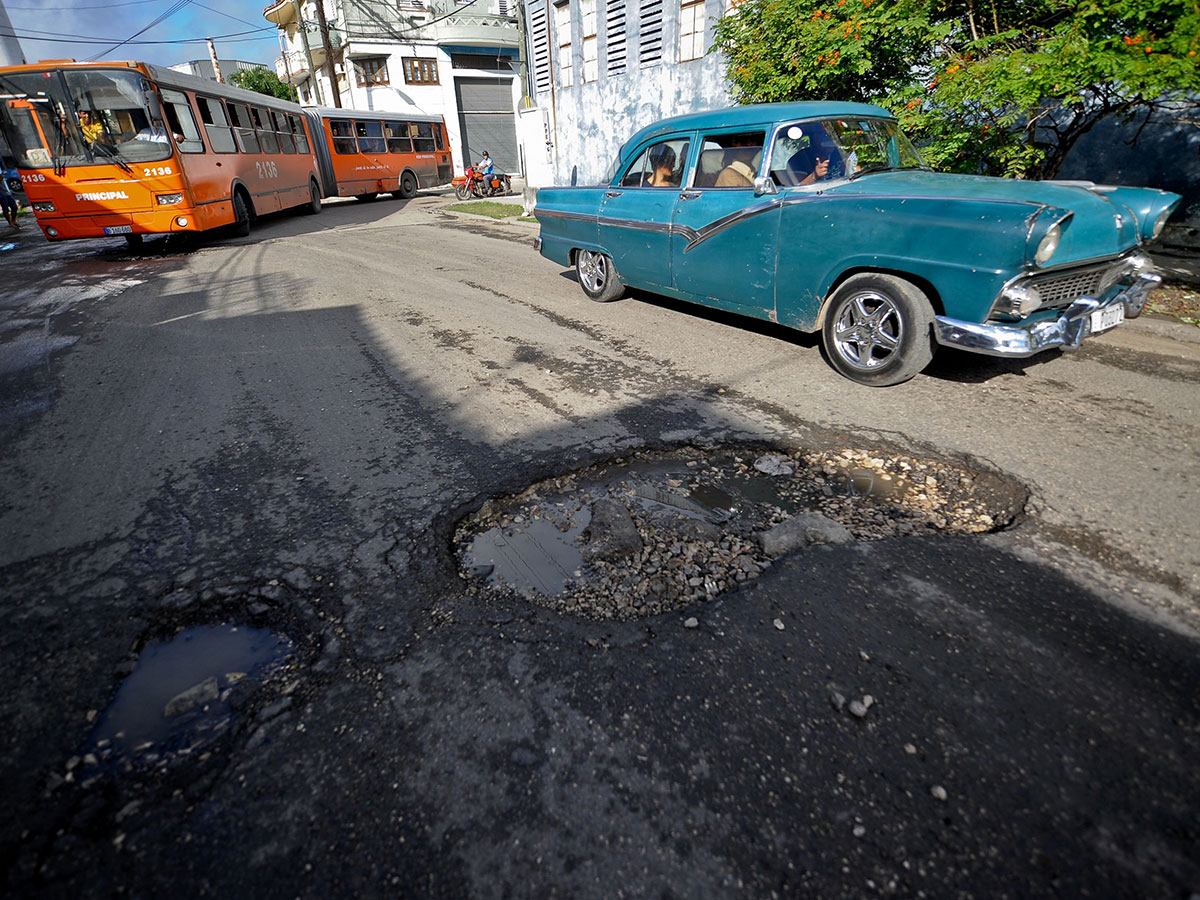

Cuba is a beautiful country. It’s the last frontier of the Caribbean, largely untouched by time and modern trimmings. It’s one of the last places on Earth that American tourists have yet to sully with our Tony Stewart team jackets and Hawaiian shirts. That’ll soon change, given that the State Department and Cuba have agreed to restore commercial airline service, but it’s business as usual until a definitive date is issued, and the gorgeous pre-embargo American cars enjoy their final moments on the tropical isle. All of which is why the Fast and Furious franchise is keen to film in Cuba now.
Producers of the forthcoming eighth installment, unsurprisingly dubbed Fast 8, completed a research trip to the forbidden country earlier this month, and submitted paperwork to the United States and Cuban governments, seeking approval to shoot a major set piece in the well-patinaed nation. If granted, it would be a historic moment. Universal Studios, backing the franchise, would be the first major studio to shoot in the socialist country in more than 50 years.
On paper, it seems like a win for all parties. Cuba enjoys a sizable influx of cash and a touch of prestige; Fast 8 gains a mysterious backdrop, relatively unseen (Conan, House of Lies and an indie film about Hemingway called Papa have shot there), and it would likely bolster F&F’s already sizable Hispanic fanbase. The production team would further benefit from cheaper labor and production costs in-country, and could avail themselves of marvelous classic wheels parked on any given corner.
RELATED: How to Keep Fast & Furious 8 From Sucking
The only problem? The overwhelming bulk of Cuba’s roads are in savage disarray. Of the nearly 38,000 miles of roads in the nation, only 18,500 were fortunate enough to receive asphalt. Among the paved, only 406 miles comprise proper highways. The remaining transportation veins, a cumulative shave above 19,000 miles, are rough, dirt and rock-strewn passages, capable of loosening a dental filling at the slowest of speeds. Assuming you could find those—most are unmarked and missing from maps—filming on them would be brutal. Particularly if you’re doing a big chase with souped and slammed rides, crucial for any proper F&F flick.

In terms of tarmacked roads, the query then becomes what percentage of roads still possess drivable tarmac? The answer: not much. Once a road has been constructed in Cuba, the notion that it would ever need repair or resurfacing seems to be a preposterous one. Status quo is more “let it ride,” even if it’s nearly impossible to drive. Potholes are the norm, smooth surfaces the outliers. Many depressions, divots and sink holes are large enough to swallow a tire and snap an axle. These hazards become a serious problem, especially if you’ve got a bad memory.
I heard the latter bit from a Havana cab driver back in 2013. I had trekked to Cuba for a bachelor party and, on a longer jaunt with a chatty fellow, he explained that the poor transportation infrastructure ensured that cars suffer. A busted taxi could take days or weeks to fix, and the lost income from being sidelined could result in loved ones going hungry, he somberly shared. Much like a London cabbie is required to know every street, it’s imperative a Cuban cabbie memorize the locations of every street’s innumerable pitfalls.
Undoubtedly, there’ll be several scenes in Havana. If the deal goes through, producers will want to track Vin Diesel or Dwayne “The Rock” Johnson as they exit a lovely building in Habana Vieja, the old part of town, unable to be simulated on any Studio City backlot. However, if there’s any serious driving to be done, the narrow, cobblestone streets of Havana’s historic districts won’t be choice options. Havana’s streets grow more pockmarked daily, providing a new set of challenges for the production crew’s fleet and the stunt drivers. While Universal is aware it’ll need to bring a bit of its own infrastructure to a place rarely connected to the Internet and power grid, the studio is not going to want to put pavers and steamrollers on its immigration card.

The best option for filming anything moving for Fast 8 around the capital would be the Malecón, the gently bending road around the city’s epicenter which also doubles as a sea wall. It’s a five-mile main artery, wide and flat, connecting old and “new” Havana. At night, it’s home to locals congregating in droves to play music, drink cheap peso rum and hang, since clubs and bars are too costly. It can be a boisterous and festive affair.
It’s also where underground drag races happen, always in the wee hours of the night. Here, tweaked Ladas go up against American muscle that’s been piecemealed together over decades in garages, always nicknamed something grand like El Exterminador or the Black Widow. Heroes are made on the Malecón, and races there are talked about for weeks. It’s proper F&F stuff. It’s moderately smooth, provided you steer clear of the road’s edges where it gets crumbly, though that does up the danger ante quite nicely.
When it’s open, the Malecón is pleasant to cruise upon. This caveat is important because the minute a storm comes in or the ocean acts up, the highway floods. Horrendously. It was closed for about 24 hours while I was there due to similar conditions, and the consistent salty spray helps erode the surface quite smartly. Walking on the sidewalk on the waterfront, I happened upon a hole in the asphalt the size of a picnic table through which you could drop directly into the foamy sea if you weren’t paying attention. When I mentioned this to our talkative taxi driver, he laughed and said he knew exactly where I was referring to. He said the Malecón will get small repairs, but nothing substantial. He likened it to putting Band-Aids on bullet wounds.
Which begs the question: Since the socialist government is taking a piece of literally everything, where is the money earmarked for transportation system upkeep actually being spent? Why, on those 406 miles of highway, of course—because that’s where the ROI is. For example, busiest bit of highway in the country is the Vía Blanca. It’s a mostly four-lane swath of black ink stretching 85 miles, connecting Havana to Varadero, two heavily tourist-trafficked parts of the nation. “The government will spend any amount to keep that road beautiful,” our cabbie said. “If tourists can’t get around, no one makes money.” (Incidentally, the Vía Blanca is also one of a handful of roads to have a toll. “Tourists are lemons and everyone wants to squeeze them whenever you can, for whatever you can,” he explained.)

His analysis was spot on. The trip to Varadero was on a silky road so fresh, the asphalt still smelled new, a stark departure from bouncing atop the jagged streets of Havana. There were few cars and trucks on most of the corridors. There were some tour buses, though. And plenty of rudimentary oxcarts, horse carts, tractors, mules and motorcycles with sidecars. These all advanced at a glacial pace, serving as rolling roadblocks for the tour buses, doubling the duration of the journey. But the road, she was a beauty.
If Fast 8 were to film in Cuba, it’s likely the Vía Blanca highway would be a prime candidate for some of the action. It’s easy to access from the capital city, it’s pristine, it’s at once desolate and beautiful, given that it stretches along the northern coast and ocean and it bisects a horde of worthy sights, including the bridge of Bacunayagua (the tallest in Cuba), the beach of Santa Maria de Mar, the oil fields of Boca de Jaruco, the Canimar River, ending in the resort town of Varadero and its idyllic white sand beaches.
Vía Blanca would offer up a bit of everything. But shuttering it to give a movie crew carte blanche would mean shutting off a flowing revenue stream. If F&F were to want this expanse, there would be a hefty premium to compensate, and the Cubans would look at Universal Studios as the ultimate, juicy lemon.
The franchise has thus far cost $759 million, but it’s become a $3.9 billion juggernaut. Hollywood can afford the investment, at any cost, especially knowing they’ll triple their money. Come April 2017, when Fast 8 is set for wide release, we hope to see Cuba, larger than life, on that silver screen. We also hope Cuba uses the money, in part, to breathe new life into a roadway system that so badly needs help.